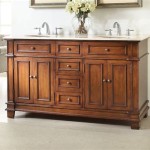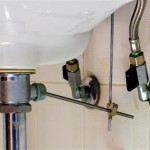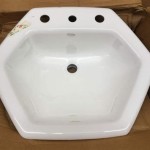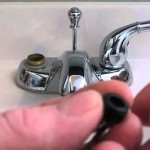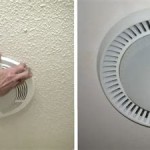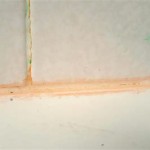How Do You Vent a Bathroom Fan Through Soffit?
Proper ventilation is crucial in bathrooms to eliminate moisture and prevent mold growth. Bathroom fans play a vital role in this process, effectively removing steam and odors. While most bathroom fans are vented directly through the roof, some homeowners opt to vent them through the soffit. This method offers advantages like discreetness and cost-effectiveness, but it requires careful planning and execution to ensure proper functionality and prevent potential issues.
Understanding Soffit Venting
Soffit venting involves exhausting bathroom fan air through a vent installed in the soffit, the underside of the roof overhang. This approach offers advantages like aesthetic appeal, as it avoids visible roof vents, and cost savings compared to roof vents, which typically require professional installation. However, soffit venting presents some challenges, requiring meticulous planning and implementation to ensure proper airflow and prevent issues like odor buildup or unwanted moisture.
The effectiveness of soffit venting depends on several factors, including the location of the bathroom fan, the size and type of vent, and the overall design of the roof and soffit system. In some situations, soffit venting might not be the most suitable option. Factors to consider include the length of the vent duct, the presence of nearby obstacles, and the potential for airflow restrictions. It's crucial to consult with a qualified HVAC professional to determine if soffit venting is feasible and appropriate for your specific bathroom.
Steps for Venting a Bathroom Fan Through Soffit
Venting a bathroom fan through soffit requires careful planning and execution. Here are the essential steps involved:
1. Determine Feasibility
Begin by assessing the feasibility of soffit venting for your bathroom. Consider the distance between the bathroom fan and the soffit, the presence of any obstacles, and the overall layout of your roof and soffit system. Consult with a professional to determine if soffit venting is suitable for your specific situation.
2. Choose the Right Vent
Select a vent specifically designed for bathroom fan exhaust. Opt for a vent with a durable construction that withstands weather conditions and provides adequate airflow. Consider the size of the vent based on the CFM (cubic feet per minute) rating of your bathroom fan. Ensure the vent is compatible with the fan’s outlet.
3. Install the Vent
Install the vent in the soffit following the manufacturer's instructions. Ensure the vent is securely attached and positioned for optimal airflow. Use weather-resistant caulk or sealant around the vent to prevent air leakage and moisture infiltration.
4. Connect the Ductwork
Connect the bathroom fan to the soffit vent using rigid or flexible ductwork. If using flexible ductwork, ensure it’s properly secured and doesn’t have any kinks or sharp bends that can obstruct airflow. The length of the ductwork should be minimized to avoid significant airflow loss.
5. Check for Proper Function
After installation, thoroughly test the bathroom fan and vent to ensure proper function. Run the fan for several minutes and check for any unusual noises or airflow issues. Observe the vent for any signs of leakage or moisture accumulation. Address any problems promptly.
Key Considerations for Soffit Venting
When venting a bathroom fan through the soffit, keep in mind the following considerations:
1. Airflow
Adequate airflow is crucial for effective moisture removal. Ensure the vent is large enough to accommodate the fan’s CFM rating and the length of the ductwork. Avoid using excessively long ductwork or sharp bends, as these can significantly reduce airflow.
2. Moisture Control
Soffit venting can lead to moisture buildup if not properly installed and maintained. Ensure the vent is weatherproof and properly sealed to prevent moisture infiltration. Consider using a vent with a moisture-resistant screen to prevent insects and debris.
3. Odor Control
Soffit vents can sometimes allow odors to escape into the attic space. Ensure the vent is properly sealed to prevent odor buildup. Consider using a vent with a built-in odor trap for added protection.
4. Code Compliance
Local building codes may have specific regulations regarding bathroom fan venting. Consult with your local building department to ensure your soffit ventilation installation meets all relevant codes and regulations. This ensures compliance and avoids potential issues.
Venting a bathroom fan through the soffit can offer a discreet and cost-effective solution for effective moisture removal. However, proper planning, installation, and maintenance are crucial to ensure proper function and prevent potential problems. Consider the factors outlined above and consult with a qualified HVAC professional to ensure a successful and compliant ventilation system.

Adding A Bathroom Fan Fine Homebuilding

Everbilt 4 In To 6 Soffit Exhaust Vent Sevhd The Home Depot

Do Your Exhaust Vents Terminate At Soffits Charles Buell Consulting Llc

Can Your Bathroom Fan Vent Into The Attic Or Soffit Beantown Home Improvements Inc

Bathroom Venting Through Soffit Greenbuildingadvisor

How To Vent A Bathroom Fan Through Soffit 4 Step Guide Home Inspector Secrets

Choosing The Right Vent Cap For A Soffit Primexvents

Soffit Bath Fan Ventilation Exterior Inspections Internachi Forum

How To Install A Bathroom Fan Roof Vent Comprehensive Guide Kyinbridges Com

Pin On Home Design
Related Posts
